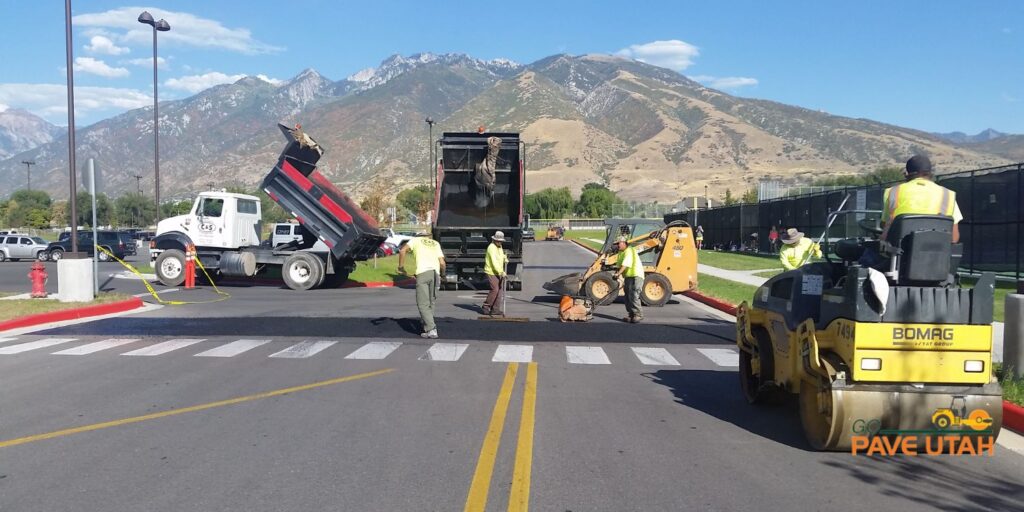Living in Utah, you are sure to have seen numerous paving projects or road construction jobs going on. Our state is often teased for how much (and how often) road construction takes place. There are many reasons for the, what seems constant, road work, and part of it is because of our weather extremes. After reading this blog, you’ll know what machines are doing what— so the next time you drive past an asphalt paving project, it may make the slow down a little more exciting. Here are some of the most common machines you’ll see on the road:
- Milling machines (or cold planers) – these machines remove the surface of a pavement (or the entire depth, which is called full-depth removal) to start the repair process of existing asphalt and get ready for the new pavement. They contain a huge rotating drum with cutters inside, which cuts up the existing asphalt product. The milled product will get sucked into an attached conveyor belt, which is then watered down to reduce dust and extreme heat, then collected by a dump truck as it is removed. Milling machines are important for the removal of damaged asphalt but also in the leveling of the pavement area.
- Sweepers – The sweeper does exactly what the name suggests—sweeps! Sweepers will clean the surface of debris, which is important because debris can cause uneven compaction of the asphalt and prevents proper bonding of the asphalt to the base. Sweepers are also important to ensure rocks or other particles don’t get tossed up and hit vehicles passing by the project site.
- Dump trucks – The three most common dump trucks on paving sites are bottom dump trucks (or belly dump trucks), which release the load from underneath; end dump trucks, which raise the front end allowing the asphalt to slide out the back of the bed; and live bottom dump trucks, which use a conveyor system at the bottom of the bed to unload the asphalt mix. Dump trucks typically haul asphalt from the plant to the project site in addition to assisting the milling machines.
- Pavers – Asphalt pavers include wheeled pavers and tracked pavers. Pavers have two parts: the tractor, which contains the feed system for the material (moves the asphalt mix from the front to the back and spreads it appropriately); and the screed, which compacts the asphalt after it’s poured. Pavers are the most important part of the paving project because they’re responsible for the distribution and leveling of the asphalt.
- Roller-Compactors – Although the paver will compact the asphalt, steel-wheeled rollers and/or pneumatic tire rollers also work together to compress and compact the mix to the base, ensuring a level surface and secure bond to the underlying base.
Different projects may require varying machinery, but these are the most common for typical jobs. Give the folks in your car a quick lesson on the different machinery as you carpool to work and make the ride a little more exciting. Go Pave Utah only uses quality machinery in peak working order for every job.
